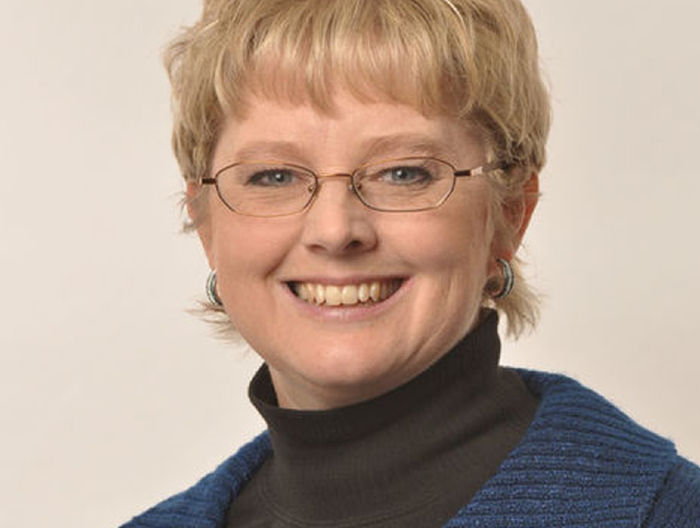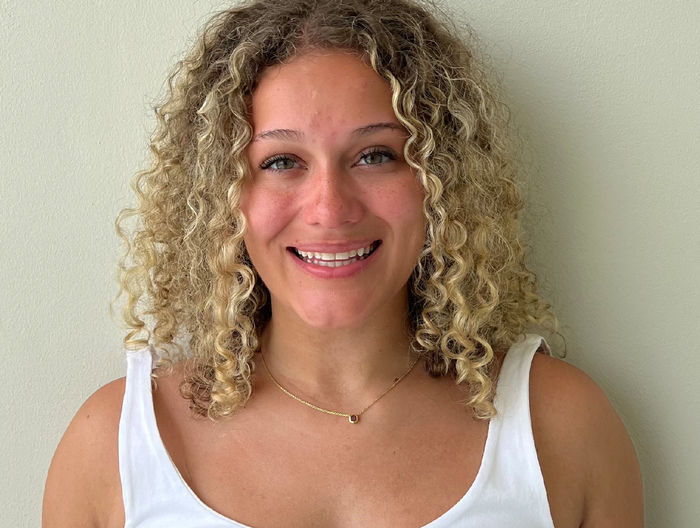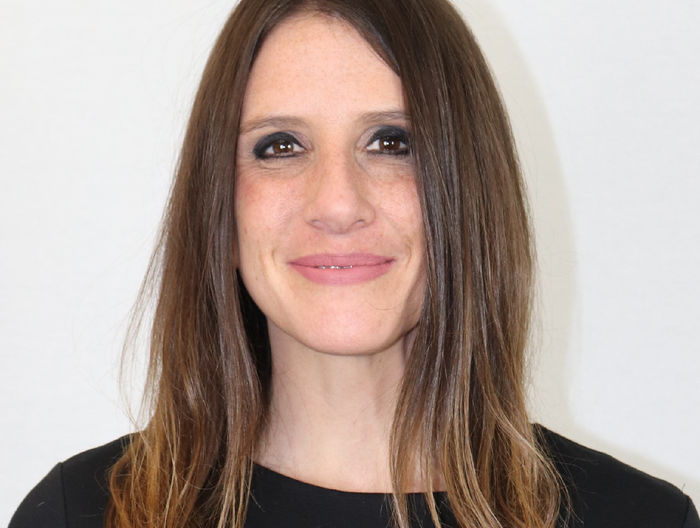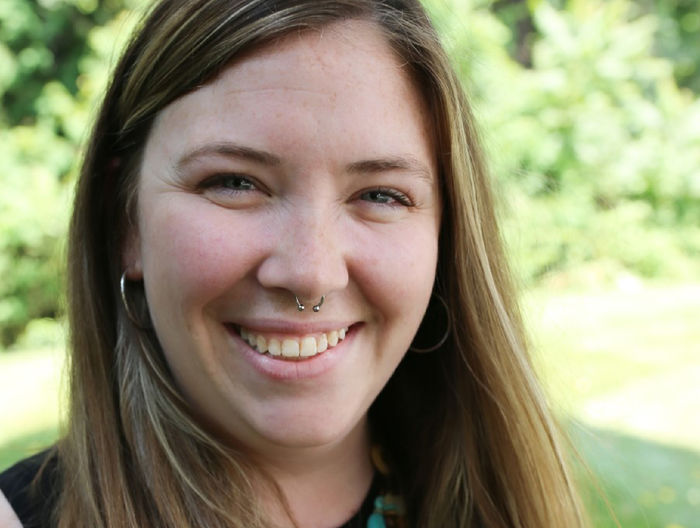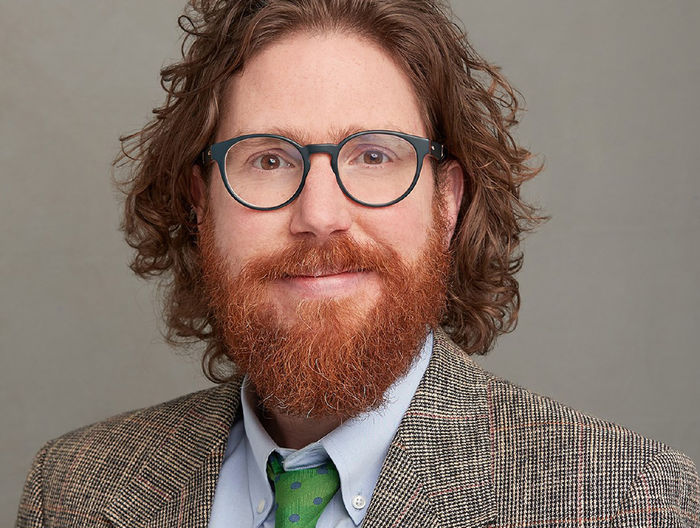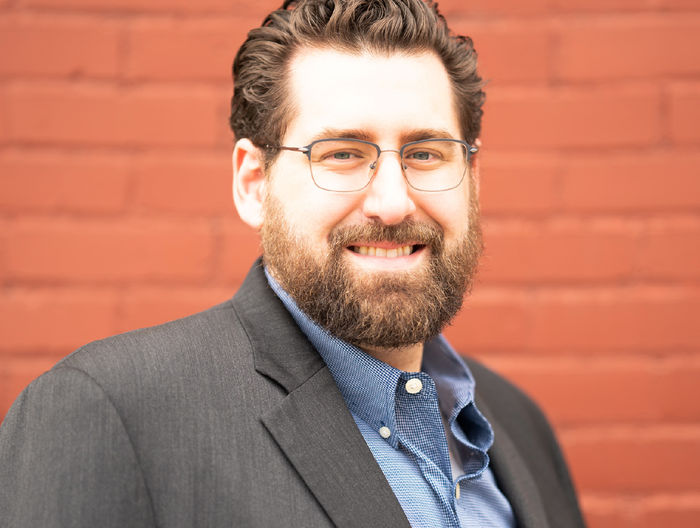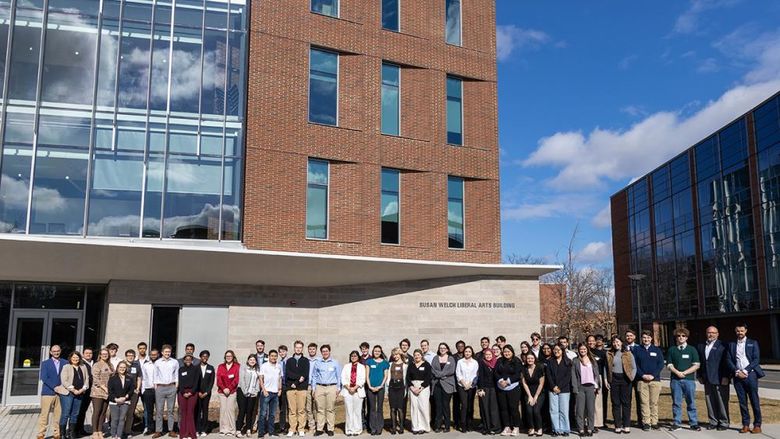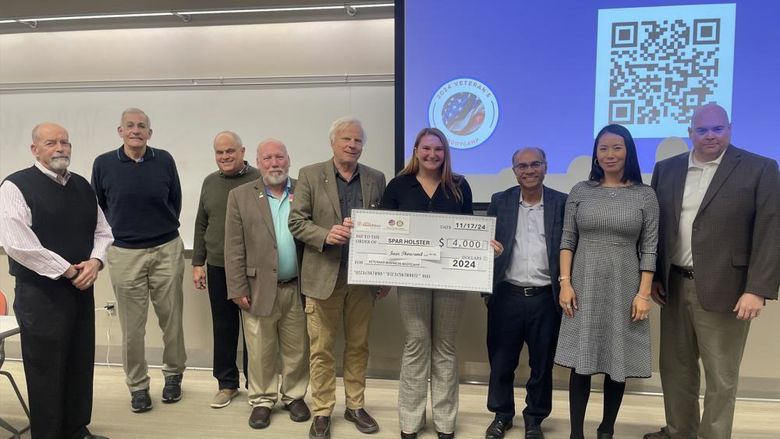MIDDLETOWN, Pa. — When Kimberly Schreck, professor of psychology, along with former colleague Richard Foxx, retired Professor Emeritus of psychology, established the master’s of arts in applied behavior analysis program at Penn State Harrisburg more than 20 years ago, it was intended not only to prepare students to meet the requirements to sit for the Behavior Analysis Certification Board Exam, but also to be a leader in preparing graduates to address some of the most critical issues and develop comprehensive solutions to socially important problems related to human behavior.
“We developed this program, at the time, to meet the needs of a lot of kids who needed ABA to address severe behaviors, aggression, self-injury and just basic learning skills,” Schreck said.
In the 20 years since its inception, the Penn State Harrisburg ABA program — and the discipline in general — has seen exponential growth.
At the time the program was created, there were only a handful of graduate programs like it across the country, according to Jonathan Ivy, associate professor of psychology at Penn State Harrisburg and alumnus of the ABA program.
“Penn State Harrisburg was very much a leader in providing graduate training in applied behavior analysis. We were among the first generation of programs that met the certification requirements at the master’s level.”
Today, the program produces some of the most highly qualified, sought-after leaders in applied behavior analysis, with graduates working in hospitals, schools, and community-based organizations; as well as working as professors, clinicians, and researchers.
Cameryn Padron, who expects to graduate from the program in 2024, enrolled after colleagues in Washington, D.C. suggested it to her. “It is one of the best programs in Pennsylvania and in the nation. The professors have so much experience and knowledge to offer their students to make them the best they can be after graduating the program. It feels like a place I can truly learn in and be successful in my career.”
She added that the applied behavior analysis discipline is so important because it revolves around identifying and improving specific behaviors. “I want to be able to help adults and children manage behaviors that affect many aspects of their life,” she said.
Preparing students for a profession in high demand
When the program began, applied behavior analysis was only known in specific circles. Schreck and Foxx saw the future potential of building the program at Penn State Harrisburg, predicting the growth of the profession, the demand for highly trained professionals in the field and a need for programs to train students.
A 2018 Behavior Analyst Certification Board Report showed that demand for board certified behavior analysts has increased by approximately 800% from 2010 to 2017 in almost every state. These BCBAs develop and implement behavior analytic programs.
Schreck said that they saw growth in similar programs at other institutions after Penn State Harrisburg’s was created.
The college’s program distinguishes itself from others through intensive in-person instruction, extensive application of concepts, providing research opportunities, a robust internship program, and highly competent faculty and mentoring.
“A core mission of the program is providing the skills and training necessary to be a competent, fluent, and highly effective behavior analyst,” Ivy said. “The program, from its origin, was designed to help produce future leaders of the discipline. We mentor students in professional, research, and clinical skills.”
It was the faculty expertise and the variety of courses that drew Kathryn Peterson, class of 2008, to the ABA program when she was looking to advance her studies in applied behavior analysis.
Peterson is now the director of Intensive Feeding Program Operations at Children’s Specialized Hospital in Somerset, New Jersey, where she oversees the daily clinical operations of the program and develops and guides research on the assessment and treatment of pediatric feeding disorders. She also serves as an assistant professor in the Rutgers Robert Wood Johnson Medical School’s Department of Pediatrics and teaches a course within the Graduate School of Applied and Professional Psychology.
She said that the program helped her career tremendously, serving as a platform from which she “developed a solid foundation, conceptually and experimentally, in the principles and concepts of behavior analysis.”
“The courses were thorough, well taught, and thought provoking,” Peterson said. “The professors modeled excellence in their delivery of classroom topics but also in their service to the community and the profession as a whole. They continued providing thoughtful mentorship even after I earned my degree. I learned from watching them how far I wanted to take my career in this field. These experiences greatly shaped my career trajectory and I owe much of that to this program and its faculty.”
The thorough training of graduates and the demand from employers for graduates of the ABA program is what Schreck said she is most proud of. “The awards and recognitions I am most proud of are my students and the high demand for them in the industry. The fact that our students are so well received and sought out for employment statewide and regionally, as well as internationally,” she said. “They are becoming the next leaders in the field; those are the accomplishments I like to hear about the most.”
What is the ABA program?
The Applied Behavior Analysis program seeks answers to the questions of “why do people do what they do?” and “how can we help someone change their behavior to live a happier and healthier life,” as well as other important questions related to human behavior.
The course of study is designed to give students the skills necessary to be a highly effective behavior analyst: In-depth understanding of applied behavioral technology, experimental analysis, methodology, behavioral philosophy, and ethical, professional behavior.
This program has been critical to the work of 2017 graduate Cortney Helsel as a clinical director. “As the prevalence of autism spectrum disorder continues to rise, the need for well-trained, competent behavior analysts is more dire than ever,” she said. “ABA remains the recommended treatment option for ASD. Behavior analysts and behavior technicians can drastically increase the quality of life for clients and their families. The science of behavior analysis can be applied to so many other areas beyond ASD — geriatrics, corrections and rehabilitation, education, other behavioral and mental health disorders, sports, corporate management, etc. so an increase in recognition of applications of ABA is critical to its continued growth.”
Hands-on experience through internship and community partnerships
James Meindl, who graduated in 2006 and is now a professor of applied behavior analysis at the University of Memphis, said that during his studies, he had the opportunity to learn in a hands-on way and the lessons he learned are lessons he currently teaches his students. “A thread of influence from all of those faculty is woven into all of my teaching,” he added. “I also made friends who remain close colleagues now, and with whom I actively collaborate. I am quite proud of the clinical expertise I gained through the Penn State [Harrisburg] program and working with the faculty following graduation.”
One way that the program is providing hands-on, real-world experience is through diverse internship opportunities with local organizations. The internships are designed to give students a view of what practicing applied behavior analysts experience. Some of the internship experiences students are participating in include working with medically fragile children and those with neurodegenerative diseases, as well as learning how to connect programs for children between school and home so that their interventions are the same in both places.
ABA interns are working with many local community partners to help children, adults, and families to learn skills and achieve a higher quality of life. For example, interns work in clinic programs to reduce severe self-injury and aggression, school districts to help teach new academic and functional skills, and in collaborations with medical professionals to help reduce medical symptoms. Some interns are going into homes to work with young children. They are learning about how to teach these children to talk and communicate what they want and need, teaching a wide variety of things — from speech to using iPads and tablets with apps to talk. Students and alumni work in diverse settings to help address a wide range of behavioral needs.
“A lot of the organizations we work with employ our alumni. So, we have developed these partnerships where our students will intern with these programs and get supervision on site from our alumni and other qualified behavior analysts,” Schreck said.
To help support students engaged in internships through the ABA program, community leaders Albert (Bert) and Josette Evans established a fund that provides financial support for student workers on campus and at outside clinics with which the college has partnerships. Their commitment will provide approximately $10,000 annually to support student internships.
“That is another form of partnership,” Ivy said. “Community leaders understand the value of this program and the unique skills of our students and alumni. In addition to generous financial support, local organizations support our students during fieldwork and then often hire them afterward because of their value to the organization.”
Impactful research
From increasing the quality of life for children with the neurodegenerative disease Sanfilippo syndrome, sometimes commonly described as childhood Alzheimer’s, to understanding the behavioral perspective of mass shootings or the fitness center hygiene and recycling habits of college students, students and faculty in the ABA program are collaborating — with each other and other universities and organizations — on innovative research on some of the most pressing behavioral and behavioral health issues.
Schreck is working on multiple research projects and papers, by herself and with students, which focus on ethics in behavior analysis — taking what they learn in class and making sure they are using it in the field. She and Ivy are working with two other universities and Penn State colleagues on doing a project examining the best way to teach ethical behavior to behavior analysts.
Schreck is also researching sleep problems for children with autism and Sanfilippo syndrome.
Ivy’s work in the analysis of mass shootings continues. He and a colleague recently finished their third paper on the subject, providing recommendations and suggestions on what can be done to address this national tragedy.
He is also working in the area of systems of motivation and reward and how to make those systems more effective.
His most recent research centers on taking a public health approach to increase nutritional health among children with autism. “Most kids with autism have a limited or restricted diet,” he explained. “There are some whose diets are so restrictive or limited that they require a specialized intervention. But many times, there are those who are not so severe to require clinical services. We are developing interventions that are simple, easy to use, and low tech that can hopefully help most children with autism eat healthier foods.”
A recently joined faculty member, Ji Young Kim, is working on multiple projects focusing on the application of behavioral economics concepts to education. Specific projects range from developing assessment measures for understanding self-regulation in children to designing effective yet efficient instruction in classrooms. Her most recent research proposed a strategy for increasing access to online education during the pandemic.
A dedicated alumni
Graduates of the ABA program serve a wide range of individuals across a multitude of settings.
There are alumni who are leading feeding programs, and others addressing the eating habits of kids with autism. There are alumni who are working in the Pennsylvania Intensive Behavioral Health Services, one-on-one behavioral health services. They may be working with people with severe aggression or severe self-injury. Some alumni are working in school districts on behavioral interventions, as well as in hospitals in research and administration.
“Most alumni take positions at behavioral health organizations as behavior analysts and in that role, they are often the leader of a multi-tiered treatment team,” Ivy said. “They are working in schools, homes, wherever there is a person who needs help, you can find a behavior analyst.”
All in all, Schreck said that alumni of the program are an incredibly dedicated group of individuals, doing unique, innovative work and giving back to the program in important ways.
After realizing he wanted to “serve others,” Jeff Garito, class of 2003, a clinical supervisor and behavior specialist working for a small company providing services to adults with developmental disabilities and as an adjunct professor in Penn State Harrisburg’s School of Behavioral Sciences and Education, said that the ABA program propelled him into working in education and human services with an emphasis on treating severe behavior. “My career exists because of this program,” he said. “More than that, ABA is a lens through which I see and understand many aspects of the world and our lives in it. I think we have an amazing body of knowledge that has yet to be applied to many of the most pressing problems facing humans today.”
Broadly, Ivy said that there are alumni in unique types of employment, including Justin Page, who graduated in 2012 and works as a clinical director at StepOne Neurodiversity Services, a new service provider for people with developmental disability and autism. At StepOne, Page and his colleagues are providing high-quality ABA autism therapy services, technical innovations and immersive experiences, including online games and gamified learning experiences to augment therapy and help facilitate skill development for individuals with developmental disabilities and autism. He uses behavioral analysis to create these virtual learning experiences.
“I supervise BCBAs and run the clinical aspects of the company. I am also an adjunct professor at the University of Pittsburgh in their ABA program,” Page said. “This discipline really speaks to me because of the underlying science, philosophy, and its application. Learning about ABA did not simply give me a career path, but helped form how I approach things in my life.”
Future of the ABA program
Right now, not all states license behavior analysts. Ivy said that it is only a matter of time until all 50 states license this profession. While Pennsylvania does not, he said that there is momentum on state legislation.
“It shows that behavior analysis as a discipline in Pennsylvania and at the national level – is not only growing in terms of numbers but is growing in application within mental and behavioral organizations,” he said. “Behavior analysis — in my opinion — is the future of behavioral and mental healthcare. I think we are going to see continual growth and although we’re ‘the new kids on the block’ there are certain qualities of this profession that make it very effective at addressing real world needs.”
Schreck and Ivy said that they are growing the program, but the foundation has continued to be maintaining high standards and solidifying the program as a leader in master’s education.
